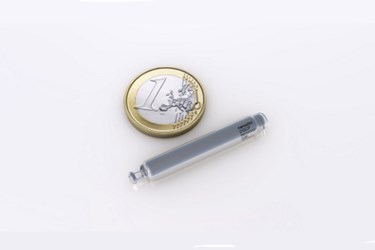Medtronic, St. Jude To Advise FDA On Leadless Pacemakers
By Jof Enriquez,
Follow me on Twitter @jofenriq

The U.S. Food and Drug Administration (FDA) is set to meet representatives from Medtronic and St. Jude Medical to gather information and recommendations on leadless cardiac pacemakers. The hearing, scheduled Feb. 18, 2016, will provide the agency a basis for regulatory decision-making and future guidelines covering said devices.
The General Issues Panel Meeting on Leadless Pacemaker Devices of the Medical Devices Advisory Committee is set "to discuss and make recommendations on clinical trial, post-approval study (PAS) design, and physician training for leadless cardiac pacemaker device technology" and to make recommendations on acute and chronic profiles of adverse event rates, indications for use, manufacturer-required training, and necessary elements for post-approval study collection, according to an FDA announcement.
Unlike conventional pacemakers that require surgical implantation in the chest, leadless pacemakers are placed via a catheter into the right ventricle. Since they are implanted directly inside the chamber, these miniaturized pacemakers do not require transvenous leads, which are known to be the Achilles heel of implantable cardiac devices, due to their tendency to break or degrade over time.
Because the long-term safety profile of leadless pacemakers is unclear, Medtronic and St. Jude Medical have been invited to present data and answer a set of questions from the FDA panel regarding the devices.
Specifically, FDA wants to know the rates of adverse events of leadless pacemakers versus traditional pacemakers, the risk profiles of target patients, and how to train physicians to address those risks.
In addition, the agency wants recommendations on what type and how much data manufacturers need to include in their post-approval reports, including the time from acute performance/implant experience, up until a designated endpoint for long term performance of these devices. FDA also is interested in collecting data on what clinicians decide to do with leadless pacemakers after they reach end of life (EOL), given present estimates of 6-12 years battery life, and how they propose to remove/extract said devices.
FDA also seeks manufacturers' input on the appropriate language for the proposed Indications for Use (IFU) statement for a single-chamber, rate-responsive ventricular leadless pacemaker.
Medtronic and St. Jude have designed similar programmable, single-chamber ventricular pacemakers, self-contained in hermetically sealed capsules, and containing a battery and electronic components.
Medtronic will present data on its Micra Transcatheter Pacing System (TPS) device, which is less than one-tenth the size of traditional pacemakers. According to a company statement, clinical trial results published in the New England Journal of Medicine demonstrated successful implantation of Micra in 99.2 percent of patients, and 96 percent of those patients experienced no major complications. Micra is CE Mark approved in the EU and is investigational in the U.S.
St. Jude's Nanostim Leadless Pacemaker fixates to the right ventricle using a non-retractable helix, similar to conventional, transvenous, active-fixation leads, but in contrast to the nitinol tines of the Micra device. Like the Micra device, the Nanostim device is implanted via a catheter through the femoral vein to the right ventricle. A St. Jude trial demonstrated Nanostim to have above 95 percent successful implantation rate, according to FDA. Nanostim also has gained CE Mark in Europe but remains investigational in the U.S.
